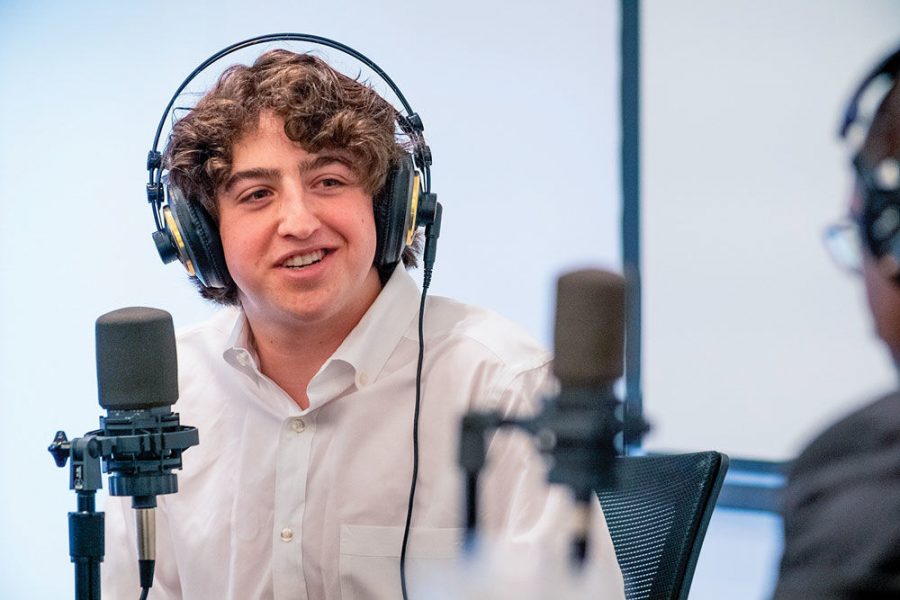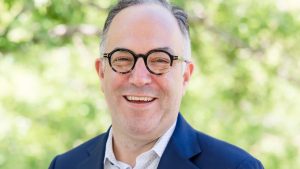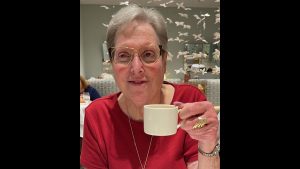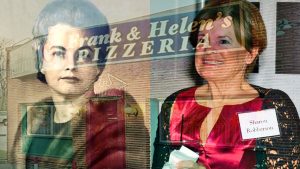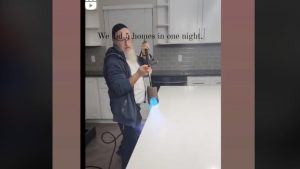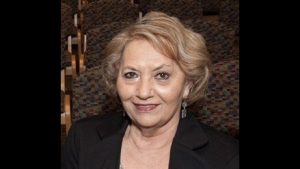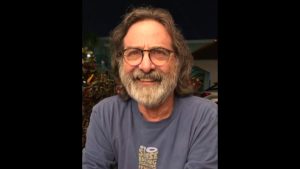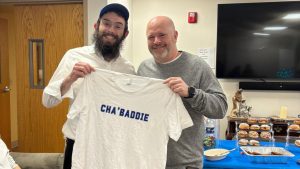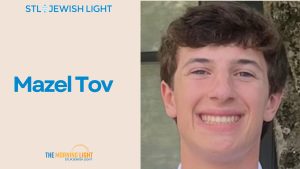From bedroom to pressroom: Now Gabe Fleisher wakes up to politics in the Rose Garden
Published May 27, 2021
Gabe Fleisher has been on a 10-year journalism journey, from summarizing news in his St. Louis bedroom before school to getting a press pass to the Rose Garden introduction of Amy Coney Barrett as a nominee to the U.S. Supreme Court.
Fleisher, 19, creator of the email newsletter “Wake Up To Politics,” is winding up his freshman year at Georgetown University in Washington, D.C., where he plans to major in government and minor in journalism. How has the seasoned journalist wunderkind fared in the competitive beltway press scramble?
“Now that I’m older, in D.C., my name is known,” said Fleisher, who started his newsletter when he was 9 years old. “I’ve been able to build connections among the press corps, people I’ve met before. … I’ve been able to say, ‘I have an audience you want to reach.’ ”
“Wake Up to Politics” has 50,000 subscribers across the nation and around the world, as well as listeners to a podcast that was produced by St. Louis Public Radio in 2020. (Fleisher stopped hosting the podcast, but the archives are available. He says he has no plans to stop the newsletter anytime soon.)
Jewish Light readers know Fleisher’s story: He is the son of Rabbi Randy Fleisher and Amy Fleisher of Central Reform Congregation, and he began his email newsletter as a way to discuss the news with his busy mom. She shared it with friends and relatives, and it grew. Early on, he went from collecting news to reporting it directly.
“It was so intimidating to a 10-year-old to be making those phone calls and emails” for access to politicians and other newsmakers, he said in a phone interview. “I got rejected many times. It was a fun challenge. I enjoyed it, but it was not easy. … It’s still hard, by the way, to get [press] access,” especially with the pandemic.
That Rose Garden event “was later reported as a superspreader event,” he noted. “It was pretty surreal. It’ll go down in history, not only as the announcement of filling a Supreme Court opening, but as a perfect distillation of the experience of the pandemic, with the president himself getting the virus.”
Fleisher wore a mask and later tested negative for the virus but still quarantined because he had been exposed to others who tested positive. But on that day, he wasn’t focused on COVID.
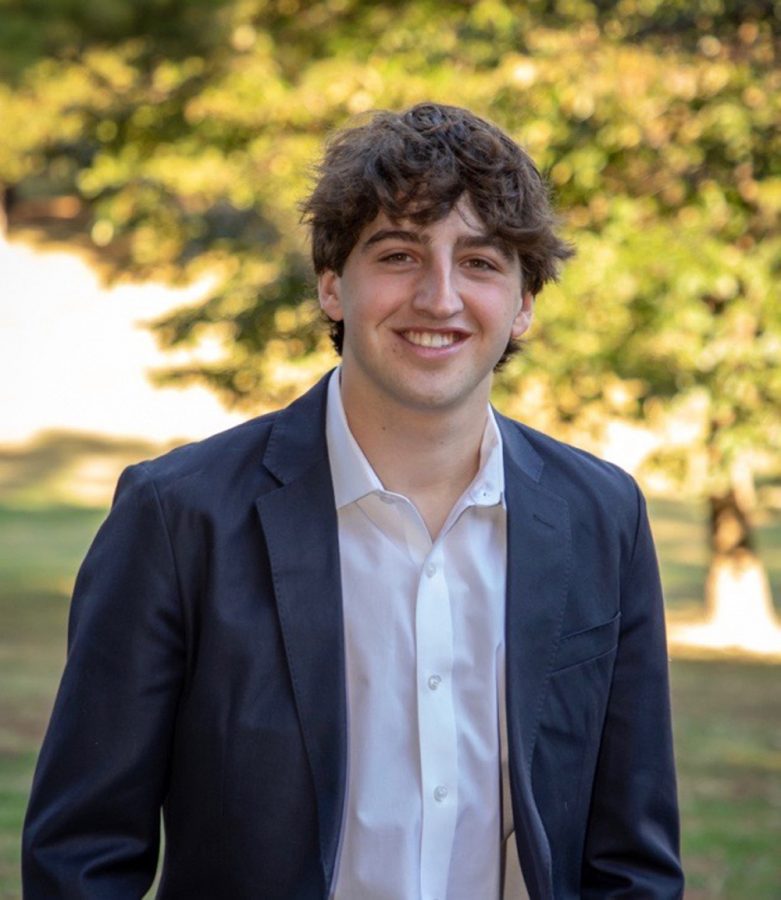
“It was my first time on White House grounds,” he said. “For someone who’s been following the presidency, as I had, it was very surreal. I spent time in the press briefing room — it’s so iconic,” a scene he had seen on TV so many times. “Part of me was on cloud nine. The other part, I was there to do a job. I was able to spend time questioning chief of staff Mark Meadows and [Trump operative] Corey Lewandowski.”
Like most of his live reporting, the introduction of Coney Barrett was Fleisher’s assignment to himself, that is, for his publication. In fact, his success in getting credentials for the event might have been partially a result of a video he took the night that Coney Barrett’s predecessor, Justice Ruth Bader Ginsburg, died.
On Sept. 18, the first night of Rosh Hashanah, Fleisher was having dinner with the family of a friend. When he heard the news of Ginsburg’s death, he took an Uber to the steps of the U.S. Supreme Court building.
“I knew that was the place to be, that people would be gathering,” he said, adding he “walked around, observed, interviewed people about what brought them there.” Nothing was planned — no speeches or program — just people gathering.
“And then — it was a pretty spontaneous event — a young woman led the mourner’s kaddish.” Fleisher took a video.
As the familiar words were spoken, “I was able know quickly what was happening, and I knew I wanted to share that video. … It was something I had heard most of my life.”
The video went viral.
A week later, Fleisher wrote his first story for The Hoya, Georgetown’s student news publication, covering a university-organized memorial service for Ginsburg, whose late husband had been a Georgetown professor.
This was only a few weeks into the fall term, and Fleisher had yet to take his first journalism class. He is finishing intro to journalism this month. Do his professor and classmates know he writes for a publication with 50,000 subscribers?
“Not that I know of,” he said.
Other student journalists know very well who he is: the editor-in-chief of a staff of five. Anna Salvatore, a student at Princeton, began writing about legal affairs last year for Fleisher’s newsletter.
Miles Hession, a student at Oxford University in England who became a subscriber after the New York Times wrote an article about Fleisher and his newsletter in 2017, e-mailed Fleisher earlier this year and suggested that WUTP needed an international correspondent. After discussions via email and Zoom, Fleisher hired him.
Then Fleisher put out a call to other student journalists and in February added three more. Using donations and proceeds from sales of T-shirts and other goods, Fleisher is paying his staff. He declined to say how much or whether he is taking a salary.
Looking back at his freshman year, Fleisher said, “College life was not how I expected it would be, but I’ve been adapting to a new reality — just like the whole world has been.”
Fleisher’s interest in politics began when he attended President Barack Obama’s inauguration in 2008. As he came back to Washington from the winter holidays to attend President Joe Biden’s inauguration, “D.C. was a ghost town — places were roped off, there was very limited press access.”
So he stood with other onlookers at the edge of the barriers to watch the ceremony. And write about it.



